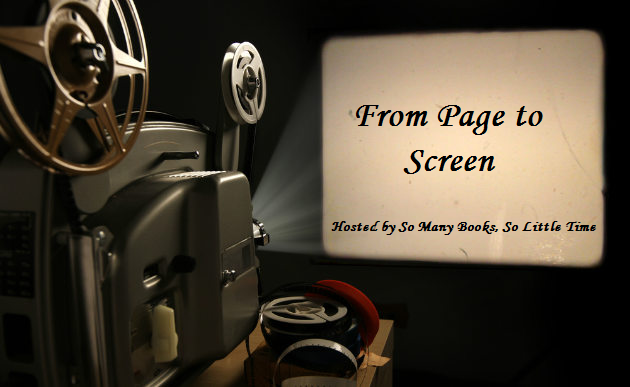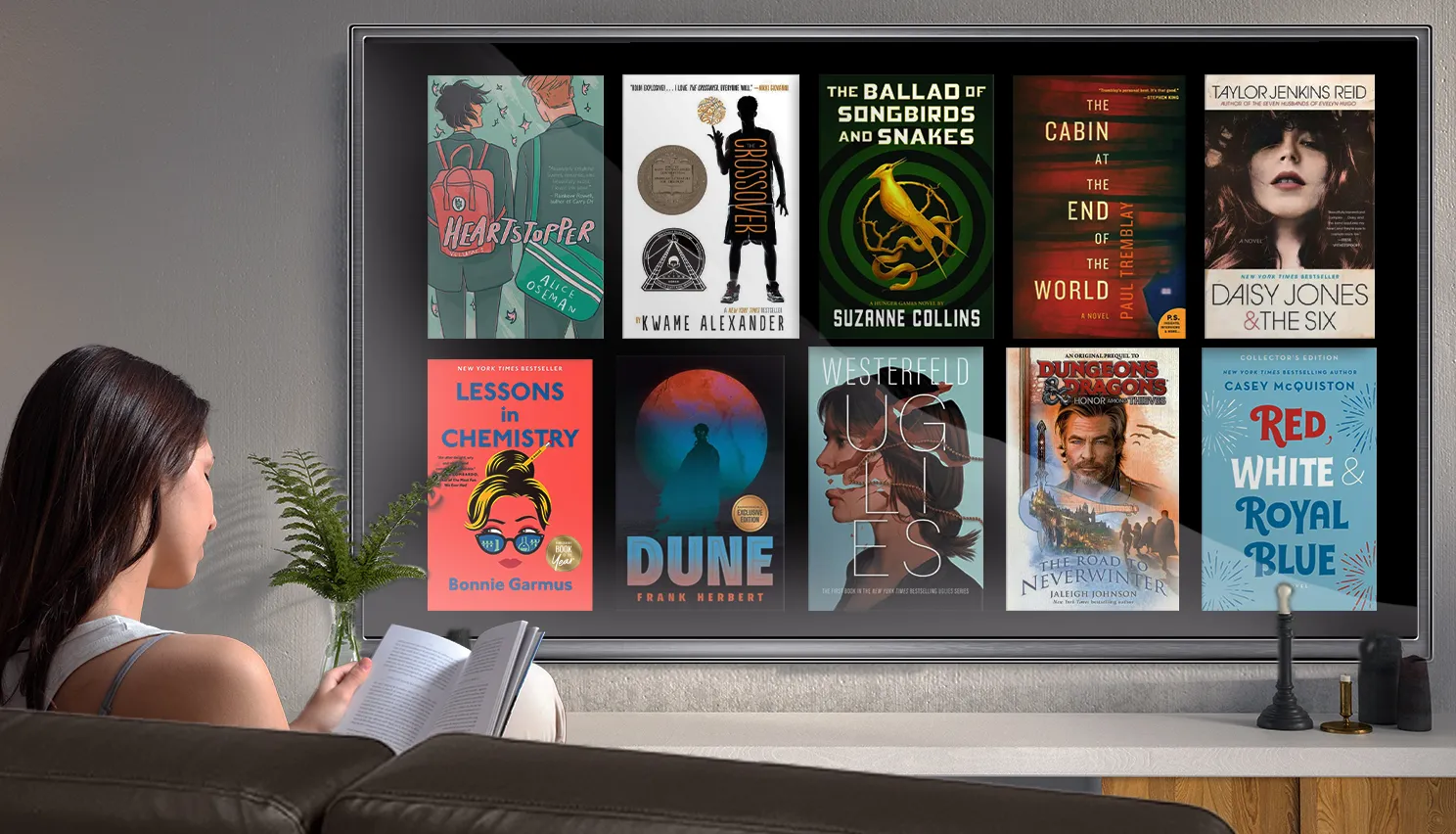From Page to Screen: How Books Are Adapted Into Movies and TV Shows
Book-to-screen adaptations have been a mainstay in the entertainment industry for decades, offering audiences the chance to experience beloved stories in a new, visual medium. The process of adapting a book into a movie or TV show can be both exciting and challenging, as it requires a delicate balance between staying true to the source material while making adjustments to fit the demands of cinema or television.
In this article, we will explore how books are adapted into movies and TV shows, the challenges faced in the adaptation process, and how the transition from page to screen can differ depending on the medium.

The Beginning of an Adaptation: Choosing the Right Book
Before a book can be adapted into a film or TV show, a producer or studio needs to identify the right story to bring to life. Not all books are suitable for adaptation, and several factors must be considered when deciding which ones will work well on screen.
Key Considerations When Selecting a Book:
-
Popular appeal: Best-selling books or stories with a built-in fan base often attract more attention from producers. Popular titles like Harry Potter, The Hunger Games, and Game of Thrones all benefited from their massive popularity before being adapted.
-
Visual potential: Some books are naturally cinematic, with rich settings, action sequences, or a strong visual narrative that translates well to film or TV. Others may rely heavily on internal monologues or lengthy descriptions that may be more difficult to depict visually.
-
Story length: The length of a book can influence whether it’s adapted into a film or a TV show. Shorter novels may work better as a single movie, while longer books might require multiple films or an entire series to do justice to the material.
The Adaptation Process: From Script to Screen
Once the book is chosen for adaptation, the next step is turning it into a script. This process involves distilling the core elements of the book into a format that works for a visual medium, which often involves significant changes.
Key Steps in the Adaptation Process:
-
Condensing the plot: Books often provide a lot of detail, character development, and subplots, many of which may be unnecessary or too time-consuming to include in a film or TV show. In adapting the book, writers condense the plot and remove or streamline certain elements.
-
Changing the narrative structure: Books may be written in first-person, third-person, or even omniscient perspectives, but in a visual medium, certain narrative styles don't always translate well. Filmmakers often change the structure of the story to make it more accessible for viewers.
-
Balancing fidelity with creativity: While staying true to the source material is important to satisfy fans of the book, filmmakers may take creative liberties to enhance the cinematic experience. This can include altering characters, settings, or plot points for dramatic effect or to make the story more suitable for the medium.
Example: The Lord of the Rings
J.R.R. Tolkien's The Lord of the Rings trilogy is a great example of a complex book series that required significant adaptation. Peter Jackson and his team condensed an intricate world with multiple characters and expansive subplots into three films, focusing on the core elements of the story while trimming many details. This created a more streamlined narrative for the screen, though it also led to the omission of many fan-favorite moments from the books.
The Role of Casting: Bringing Characters to Life
One of the most exciting (and often controversial) aspects of book-to-screen adaptations is casting the right actors to portray beloved characters. Fans of the book often have strong visualizations of what characters should look like, and casting decisions can make or break an adaptation.
The Casting Process:
-
Staying true to the character’s essence: While physical appearances may vary from the book description, it’s important for casting directors to focus on capturing the essence and personality of the characters.
-
Fan expectations: When adapting a highly popular book, the casting choices are often scrutinized by fans. Casting a well-known actor can bring star power to the adaptation, but casting the "wrong" actor can alienate the fanbase.
-
Chemistry between leads: Especially for romance or adventure stories, the chemistry between the main characters is crucial for an adaptation. This can sometimes lead to rewrites or changes in dialogue to better suit the actors' performances.
Example: Harry Potter Series
The casting of the Harry Potter films was a highly scrutinized process, as fans had their own expectations about how characters should look and behave. However, the performances of Daniel Radcliffe, Emma Watson, and Rupert Grint as Harry, Hermione, and Ron, respectively, were widely praised for bringing the characters to life, despite some differences in appearance compared to the descriptions in J.K. Rowling’s books.
Visualizing the World: The Role of Production Design
Books allow readers to imagine the world and setting in their own way, but when adapting a book to film or TV, the production team must create a visual representation of that world. Production design is crucial to bringing the book’s setting to life, whether it's an entirely fictional universe or a grounded, real-world environment.
Aspects of Production Design:
-
Creating immersive worlds: Fantasy, sci-fi, and historical adaptations often require elaborate sets, costumes, and special effects to accurately reflect the world of the book. The production team must think about everything from architecture to clothing to ensure that the setting matches the tone and atmosphere of the story.
-
Digital effects vs. practical effects: The use of digital effects (CGI) is common in adaptations of fantastical books, but practical effects and carefully constructed sets can add a level of realism to the adaptation that CGI might not achieve.
-
Cultural authenticity: When adapting books set in specific cultures, the production team must ensure that the representation is culturally sensitive and authentic. This can include consulting experts, hiring advisors, or researching the setting in detail.
Example: The Hunger Games
The dystopian world of The Hunger Games required a carefully designed landscape to portray the contrast between the lavish Capitol and the impoverished districts. The filmmakers used a combination of real locations and CGI to create a visually immersive world that captured the essence of Suzanne Collins' vision.
The Influence of the Medium: Movie vs. TV Show
While many books are adapted into films, some stories are better suited for TV shows. The decision to adapt a book into a movie or TV series depends on the depth of the source material and how much time is needed to explore the characters and plot.
Movie Adaptations:
-
Pros: Movies tend to be more concise and have a defined beginning, middle, and end. They can have a faster pacing and higher-budget visuals, making them ideal for action-packed stories.
-
Cons: Due to the time constraints of a movie, many details from the book may be left out, and character development may feel rushed.
TV Show Adaptations:
-
Pros: TV shows offer more time to delve into character arcs and subplots. Episodes can also allow for a more detailed exploration of a book’s world, making them ideal for complex novels or series.
-
Cons: TV shows can sometimes suffer from pacing issues, and not all TV adaptations are given the budget or resources to do justice to their source material.

Example: Game of Thrones vs. Big Little Lies
Game of Thrones, based on A Song of Ice and Fire by George R.R. Martin, was adapted into a sprawling TV series to accommodate the depth and complexity of the books. On the other hand, Big Little Lies by Liane Moriarty was adapted into a TV series with only one season covering the book, with the addition of original content that wasn't in the book to expand the story.
The Final Touch: Editing and Post-Production
Once the filming is complete, editing and post-production are essential to turning the adaptation into a polished final product. This phase involves fine-tuning the pacing, adding special effects, and ensuring the adaptation stays true to the tone of the original book.
Conclusion: From Page to Screen
Adapting a book into a movie or TV show is a delicate process that requires creativity, collaboration, and a deep understanding of both the original material and the medium of film or television. While some adaptations succeed in capturing the essence of the book, others face criticism for changes made in the transition from page to screen. Regardless of the outcome, the adaptation process is a fascinating journey that allows fans to experience their favorite stories in a new and exciting way.
Whether a book becomes a blockbuster film or a successful TV series, the process of taking a story from page to screen continues to be a cornerstone of entertainment, captivating audiences with fresh interpretations of beloved works.












